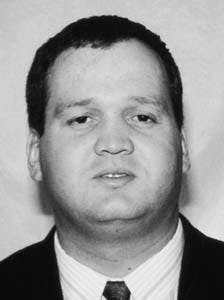W.G.F. Ford
Halliburton Energy Services
Duncan, Okla.
L.L. Gadeken
Halliburton Energy Services
Houston
T.J. Callahan
Halliburton Energy Services
Grande Prairie, Alta.
D. JacksonA research project in Canada recently demonstrated that a solvent can remove barium sulfate (BaSO 4) scale contaminated with NORM from wells. The solvent dissolves the BaSO 4 scales, and all radioactive material is left downhole, eliminating costly NORM disposal. Each year, scale precipitation costs operators millions of dollars in maintenance, treatment, and lost production. Scale contaminated with naturally occurring radioactive material (NORM) creates further problems because NORM scales fall under strict and expensive disposal guidelines. Highly insoluble BaSO 4 scales can be difficult to treat because radioactive materials often incorporate into the scale as it forms. BaSO 4 scales have had to be removed by mechanical scraping or reaming, which is troublesome and costly. The strict regulations concerning disposal of NORM scale add to the costs of the treatment.
Pan Canadian Petroleum Ltd.
Calgary
Scales
Scale is a solid mineral deposit that forms from produced salt water.1 Because water constantly dissolves and deposits solids, scales can build up wherever water production occurs. Scaling can cause production problems in primary production wells, secondary wells, injection wells, disposal wells, and pipelines that connect wells to tank batteries. Scale is caused by a combination of events including:- Pressure changes
- Temperature changes
- Impurities
- Additives
- Variations in flow rates
- Changes in pH
- Fluid expansion
- Gas evaporation
- Mixing of incompatible waters.
Scale also can deposit in fractures and formations that are distant from the well bore.
NORM contamination
NORM can occur in the ground, in the air, and in the human body. Natural radioactive substances found in earth formations include uranium, thorium, and actinium. Uranium products ( 238U) cause the most trouble in the oil field. The radioactive contaminant radium ( 226Ra), which can occur in some scales such as barites, has a half-life of 1,620 years. Radium decays to radon gas ( 222Ra), which has a half-life of 92 hr. The radon gas generally is trapped in the crystal lattice of the barite scales. Bismuth ( 214Bi) and a lead isotope ( 214Pb) emit practically all the gamma radiation from NORM-contaminated scale. 2 Thorium and actinium products are not found in sufficient quantities to be a concern to the oil industry.NORM disposal
Although the health risks from low levels of NORM are considered minimal, disposal of NORM wastes can be hazardous. While radioactivity from oil field scale is low from pipe to pipe, the total radiation level increases when all pipe scale at one site is gathered in one place. The U.S. government and individual state regulations control oil field scale disposal, which makes the disposal effort difficult and expensive. As of July 1994, only one site in the U.S. was available for NORM waste disposal. That site, in Utah, charges $300-500/drum for disposal. The Environmental Protection Agency (EPA) allows some operators to pump NORM wastes underground in regulated hazardous waste disposal wells. Individual states also regulate NORM scale disposal as a solid waste under Subtitle D of the Resource Conservation and Recovery Act (RCRA) under the drilling fluids exclusion. Texas and Louisiana also have instituted state NORM regulations. Louisiana allows equipment and piping to be used without restriction if the maximum radiation exposure level does not exceed 25 microrem/hr according to the Implementation Manual for Management of NORM in Louisiana. The Texas Regulations for Control of Radiation, Part 46, limit the maximum contact time to 50 microrem/hr. Other states have implemented the terms of the Texas regulations. Most oil and gas producing nations have established NORM contamination standards and procedures since NORM became a problem in North Sea wells in 1981. 3Solvent treatment
The candidate well for treatment was an injection well that was completed in October 1984 at a total depth of 1,445 m (4,741 ft). The interval was perforated from 1,369 to 1,372 m. In November 1985, the well was converted to an injector. The well had a bottom hole pressure of 10,985 kPa (1,593 psi) and a bottom hole temperature of 53 o C. (127 o F.). The well was treated eight separate times in 10 years. The first treatment, in October 1984, was a gelled acid wash and squeeze with 15% HCl and gelled 28% HCl. Subsequent treatments included a nitrogen squeeze, a series of solvent treatments, and an acid wash and squeeze. Over the course of 10 years, the well showed a slow decline in the injection rate. The probable cause was scale formation caused by mixing incompatible waters.Pretreatment analysis
To determine the source of the scaling, the project researchers analyzed the produced water and source water for scaling tendencies. The individual waters were analyzed and then mixed in various ratios and analyzed over a range of applicable temperatures.Table 1 [23843 bytes] shows the produced water was high in sulfate, and the source water was high in barium. The results suggest that BaSO4 scale could form if the two waters were mixed. A scale measurement program (Program 1) was used to analyze the scaling tendencies of the waters. Table 2 [28927 bytes] shows that the waters had the tendency to form scales of calcium carbonate (CaCo3), calcium sulfate (CaSO4), barium sulfate (BaSO4), and strontium sulfate (SrSO4) at 24, 38, 52, and 66o C. According to the program, the produced water had a strong tendency to form calcium carbonate (CaCo3) scale at 24-66o C., a slight tendency to form barium sulfate (BaSO4) scale at 24-52o C., and a slight tendency to form strontium sulfate (SrSO4) scale at 38-66o C. The program determined that the source water had a moderate tendency to form calcium carbonate scale at 24-66o C. and a slight tendency to form barium sulfate scale at 24o to 52o C. A second scale measurement program (Program 2) calculated the scaling tendency after mixing two waters at various ratios at 24 and 53o C. The well bottom hole temperature was 53o C. Various ratios of the produced water and source water showed a moderate-to-strong tendency to form CaCo3 scale and a slight-to-strong tendency to form BaSO4 scale (Tables 3 [44723 bytes]). The program confirmed that CaCo3 or BaSO4 scale was likely to form whenever the produced water and the source water were mixed. Because the well had been treated with conventional acid treatments and still showed an injection rate decline, it was decided that the probable cause was BaSO4 scale. Before designing the scale treatment, the researchers performed compositional and analytical tests on the scale to determine the concentration and contact time required for an effective solvent treatment. A scale sample was analyzed with X-ray diffraction (XRD) to identify the minerals. BaSO4 was the only crystalline mineral present. The scale was also analyzed with a scanning electron microscope (SEM) with an X-ray energy spectrometer to determine the elemental composition of the sample. The results showed that barium (Ba) was the predominant element with lesser amounts of sulfur. The SEM also detected trace quantities of iron, calcium, strontium, and aluminum (Fig. 1 [25477 bytes]). A gravimetric solubility test determined the maximum solubility of the scale with a fluid system containing 30% water and 70% BaSO4 scale solvent (Table 4 [13580 bytes]). As predicted, the scale showed no solubility in 15% HCl and 12% HCl-3% HF. A pretreatment gamma ray spectroscopy log determined the amount and the location of the scale in the well. An earlier gamma ray spectroscopy measurement in the field had discovered uranium in the formation. The perforated interval at 1,369-72 m was immediately below an organic-rich shale containing uranium, which was the source of the NORM.
Treatment results
The pretreatment analysis revealed that BaSO 4 scaling had consistently decreased the injection rate and increased costs to support the waterflood. Difficulty in maintaining injection had resulted in increased gas/oil ratios, which jeopardized the operation of the pool. The scale had been contaminated with NORM by an organic-rich shale containing uranium located immediately below the perforation interval. Conventional mechanical removal of the BaSO 4 scale would have resulted in radioactive material being circulated back to the surface. The solvent treatment consisted of pumping 3.5 cu m (22 bbl) of 30% water and 70% BaSO 4 solvent mixture into the workstring. Matrix rates and pressures were used to squeeze 3.0 cu m of the mixture into the formation. The mixture was held in the formation for 60 hr. A 5.0 cu m, 15% HCl matrix acid treatment containing two gelled temporary bridging agent diverter stages followed the solvent soak. The scale solvent was bullheaded and overdisplaced, leaving all the radioactive material downhole. The well was then cleaned up and placed back on injection to evaluate the treatment. A post-treatment gamma ray spectroscopy log shows that the BaSO 4 scale dissolved across the perforations and near the well bore ( Fig. 2 [28927 bytes]). The right side of the gamma ray track in Fig. 2 [28927 bytes] shows the NORM gamma ray signals before and after the well was treated. The gray NORM curve represents the scale present before the treatment. The black NORM curve represents the scale remaining after treatment. The gray shading shows the relative amount of scale removed and indicates that 20-50% of scale was removed in the interval from 1,357 to 1,383 m surrounding the perforations. Near the bottom of the well, as much as 80% of the scale seems to have disappeared. Some redistribution of the scale materials also may have occurred, where the black curve is greater than the gray curve. The gamma ray spectroscopy data indicated that the scale removal treatment was successful, resulting in an injection rate of 221 cu m/day (1,390 b/d) at 15,900 kPa (2,306 psi) wellhead pressure. The target injection rate was 60 cu m/day, which was the expected rate after a mechanical treatment. If only mechanical methods of scale removal were used, an injection rate of 221 cu m/day would have required an additional three wells at a estimated cost of $400,000/well. Therefore, the solvent treatment saved $1.2 million. The treatment also eliminated the NORM scale handling and disposal costs.References
1. "Scale Prevention," Best Practices Series (CS-5220), Halliburton Energy Services, 1994. 2. Bull. E2, Management of Naturally Occurring Radioactive Materials in Oil and Gas Production, API, April 1992, pp. 33-35. 3 Von Flaten, R., "NORM Contamination, Regulations Threaten Industry Economy," Petroleum Engineering International, May 1993, pp. 36-39.The Authors
W.G.F. Ford is a principal chemist for Halliburton Energy Services in Duncan, Okla. He has worked with acidizing and stimulation chemicals for over 20 years. Ford has a PhD in physical chemistry. He holds over 15 patents and is a member of SPE.
L.L.Gadeken is a principal research physicist for Halliburton Energy Services in Houston. Gadeken has been participating in the adaptation of nuclear borehole geophysical logging measurements for environmental characterization and monitoring applications. He has a BS in physics and mathematics from Westmar College and an MS and PhD in nuclear physics from the University of Iowa. Gadeken is a member of IEEE, SPE, and SPWLA.
T.J. Callahan is a technical supervisor for Halliburton Energy Services in Grande Prairie, Alta., where he provides technical support to six operational bases in Canada. Callahan has a BS in petroleum engineering from the New Mexico Institute on Mining & Technology.
D. Jackson is a production engineer for Pan Canadian Petroleum Ltd. He has worked in the oil industry for the last 10 years. Jackson has a BS in petroleum engineering from the University of Alberta.
Copyright 1996 Oil & Gas Journal. All Rights Reserved.






